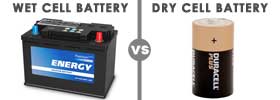Difference between Samsung Galaxy Tab 2 7.0 and Asus FonePad
Key Difference: The Samsung Tab 2 7.0 is a 7-inch tablet that offers a PLS TFT LCD display, with approximately 170 ppi density. The device is also available in two versions; Wi-Fi only and Wi-Fi + 4G. The Wi-Fi only tablet is powered by a 1 GHz Dual-core processor and is available with the Android v4.0 Ice Cream Sandwich, while the Wi-Fi + 4G LTE tablet is powered by a 1.2 GHz Dual-core processor and comes with Android v4.1 Jelly Bean. Asus has announced the launch of newest phablet, the Asus Fonepad. The Fonepad is a 7-inch Android tablet that allows users to also make phone calls by placing the device on their ear. The phablet sports a 7-inch IPS LED backlit touch screen that allowed multitouch capability for up to 10 people. The screen has a resolution of 1280 x 800, which provides approximately 216 ppi density, a decent enough resolution.
 Samsung Galaxy Tab 2 7.0 is a major upgrade to the company’s original Samsung Galaxy Tab. The tab shares many features to its big brother The Galaxy Tab and the Galaxy Tab 7.0 Plus. The tab is actually a downgrade compared to the Galaxy 7.0 Plus, including the price of the tablet. However, during the launch it was also the only Tablet on the market at that time which served the Android Ice Cream Sandwich right out of the box. The device is also available in two versions; Wi-Fi only and Wi-Fi + 4G. Both the devices differ in a few areas so, when purchasing either device, make sure to once look over the various different features that are offered in the Wi-Fi + 4G, which are missing the Wi-Fi only model.
Samsung Galaxy Tab 2 7.0 is a major upgrade to the company’s original Samsung Galaxy Tab. The tab shares many features to its big brother The Galaxy Tab and the Galaxy Tab 7.0 Plus. The tab is actually a downgrade compared to the Galaxy 7.0 Plus, including the price of the tablet. However, during the launch it was also the only Tablet on the market at that time which served the Android Ice Cream Sandwich right out of the box. The device is also available in two versions; Wi-Fi only and Wi-Fi + 4G. Both the devices differ in a few areas so, when purchasing either device, make sure to once look over the various different features that are offered in the Wi-Fi + 4G, which are missing the Wi-Fi only model.
Both the models offer similar dimensions and major features, with the differences being only with the processor speed, OS, camera features and colors. The Samsung Tab 2 7.0 is a 7-inch tablet that offers a PLS TFT LCD display, with approximately 170 ppi density. The Plane to Line Switching (PLS) differs from the IPS technology of the other tablets and while it provides decent wide viewing angles, it still has a high propensity for reflecting surfaces. The display also lags compared to the other IPS displays with higher resolutions. The tablet is small and sleek compared to the other 7-inch devices making it lighter and easier to hold. The device has a sturdy design and has an all-grey plastic back. It has a thick bezel with a light grey screen. The device houses the power button, the volume button and the IR-port on the right side of the device, the microSD card slot is placed on the left side covered by a plastic flap. The 3.5mm jack is on top of the device and docking port is at the bottom.
The Wi-Fi only tablet is powered by a 1 GHz Dual-core processor and is available with the Android v4.0 Ice Cream Sandwich, while the Wi-Fi + 4G LTE tablet is powered by a 1.2 GHz Dual-core processor and comes with Android v4.1 Jelly Bean. Both devices offer 1 GB RAM and are available with 8/16/32 GB internal storage capacity that is expandable by 32 GB. The tablets house a 3.15 MP rear camera and a VGA front camera for video conferencing. The VGA camera is a downgrade from the 2 MP offered on Galaxy Tab 7.0 Plus. The camera also comes with a Flash that is placed under the camera on the back of the device. The 4 LTE tablets also come with additional camera features such as: Smile Shot, Geo-tagging, Editing Modes, Camcorder, DivX, HD Recording, HD Playback, Video Share and Online Image Uploading.
Both the devices sport IR blasters, which allow the tablet to be used as a fully-functioning remote control. The device houses a non-removable Lithium-ion 4,000 mAh that provides a lasts a good amount of time on the Wi-Fi as well as the 4G network. The device is available in black and white on the Wi-Fi + 4 LTE, while an additional Garnet Red color has been added to the line for the Wi-Fi only tablet. Both the models come with various built in Samsung Applications and have been approved for Enterprise by the Company, something known as SAFE (Samsung Approved for Enterprise). This includes an array of business applications such as: Microsoft® Exchange ActiveSync, Virtual Private Network (VPN) Access, Polaris® Office, Video Chat, Cisco WebEx, EAS IT Policy, HW Encryption and Sybase Afaria. However, it lacks in terms of tablet based applications in Google Play. Well, that is not exactly Samsung’s fault but it is one of things that have been keeping pushing sales of Apple tablets more than Android Tablets. Google Play has not been able to offer enough applications that support the tablet format. This problem should only be temporary as the demand for tablets is on the rise in the market.
Asus has announced the launch of newest phablet, the Asus Fonepad. The company states that the purpose of launching this phone is to bridge the gap between the phone and the tablet, eliminating the need for the carrying to separate devices. The Asus Fonepad is practically a tablet that has phone call making capabilities. The Fonepad is a 7-inch Android tablet that allows users to also make phone calls by placing the device on their ear. Some people may find it silly to place such a huge device on their ear to make calls; for those people the tablet does allow connectivity with a Bluetooth device.
 The Asus Fonepad has borrowed a bunch of features from the Nexus 7, which was also created under Google and Asus collaboration. The weight, dimension and the display are all similar to the Nexus 7; however, the company has replaced the back. The plastic-leather back of the Nexus 7 has been replaced with a slick, steel casing. The device is available in titanium gray and champagne gold colors. The phablet sports a 7-inch IPS LED backlit touch screen that allowed multitouch capability for up to 10 people. The screen has a resolution of 1280 x 800, which provides approximately 216 ppi density, a decent enough resolution. Under the hood, the phablet runs on 1.2 GHz single-core Intel Atom processor, making it pretty fast for multi-tasking, along with playing some high-res games. The device has 1 GB RAM.
The Asus Fonepad has borrowed a bunch of features from the Nexus 7, which was also created under Google and Asus collaboration. The weight, dimension and the display are all similar to the Nexus 7; however, the company has replaced the back. The plastic-leather back of the Nexus 7 has been replaced with a slick, steel casing. The device is available in titanium gray and champagne gold colors. The phablet sports a 7-inch IPS LED backlit touch screen that allowed multitouch capability for up to 10 people. The screen has a resolution of 1280 x 800, which provides approximately 216 ppi density, a decent enough resolution. Under the hood, the phablet runs on 1.2 GHz single-core Intel Atom processor, making it pretty fast for multi-tasking, along with playing some high-res games. The device has 1 GB RAM.
There will be two versions of the tablet, one for Europe, the other for Asia. The launch regarding rest of the World has yet to be revealed. The European variant will have 16 GB internal storage capacity, with no rear camera. However, the Asian variant will 8 GB internal storage capacity and will house a 3.2 MP rear camera. Both the variants will house 1.2 MP front camera for video conferencing. The phablet will not support 4G capabilities. The phablet will be available with preloaded Android v4.1 Jelly Bean, with no announcements yet regarding if it is upgradeable to the newest version. The internal storage capacity can expanded up to 32 GB using a MicroSD. One of the most prominent features of the phablet is the massive battery that has been mounted on the device. The non-removable Li-Ion 4270 mAh battery allows the phone to support 32.5 hours of talktime on 3G and 751 hours of standby time. There is no proper release date for the phone, with the expected release to be around April or May 2013.
The information for the detailed table about the two phones has been taken from the Samsung website, pcmag.com, engadget.com, Asus website, trustedreviews.com, pcworld.idg.com.au and GSMArena.com.
|
|
Samsung Galaxy Tab 2 7.0 |
Asus Fonepad |
|
Launch Date |
April 2012 |
Expected April 2013 |
|
Company |
Samsung |
Asus |
|
Size |
193.7 x 122.4 x 10.5 mm |
196.4 x 120.1 x 10.4 mm |
|
Display |
7.0 in (18 cm) PLS TFT LCD display |
7" LED Backlight WXGA IPS Panel touch screen |
|
Screen |
1024 × 600 pixels (~170 ppi pixel density) |
1280x800 (~216 ppi pixel density) |
|
Protection |
N/A |
N/A |
|
Weight |
345 grams |
340 g |
|
2G Network |
GSM 850 / 900 / 1800 / 1900 |
GSM 850 / 900 / 1800 / 1900 |
|
3G Network |
HSDPA 900 / 2100 - GT-P3100 HSDPA 850 / 900 / 1900 / 2100 - GT-P3105 |
WCDMA: 850/900/1900/2100 HSDPA 850 / 900 / 1900 / 2100 |
|
4G Network |
Depends on market capability |
N/A |
|
GUI |
TouchWiz UX UI |
Asus UI |
|
CPU speed |
1 GHz Dual-core processor/ 1.2 GHz Dual-core Qualcomm processor (4G) |
1.2 GHz Single-core Intel Atom |
|
GPU |
PowerVR SGX540 |
PowerVR SGX540 |
|
OS |
Android OS v4.0.3 (Ice Cream Sandwich), upgradable to v4.1.1 (Jelly Bean) |
Android OS v4.1 (Jelly Bean) |
|
Chipset |
TI OMAP 4430 |
Intel Atom Z2420 |
|
RAM |
1 GB RAM |
1 GB |
|
SIM Size |
mini-SIM |
microSIM |
|
Internal Memory |
8/16/32 GB |
8/16 GB |
|
Expandable Memory |
Up to 32GB |
Up to 32 GB |
|
Sensors |
Accelerometer, digital compass, light and proximity |
GPS & Glonass,G-Sensor, E-compass, Proximity, Ambient Light Sensor |
|
Connectivity |
2G, 3G, 4G, Bluetooth technology v3.0, USB 2.0 Host, Wi-Fi 802.11 a/b/g/n, DLNA and Wi-Fi Direct |
GSM, HSDPA, WCDMA, Bluetooth, USB, WLAN802.11 |
|
Data |
GPRS, EDGE, WLAN, Bluetooth, USB |
GPRS, EDGE, WLAN, Bluetooth, USB |
|
Speed |
HSPA+ 21Mbps 850/ 900/ 1900/ 2100 |
HSDPA 21 Mbps, HSUPA 5.76 Mbps |
|
WLAN |
Wi-Fi 802.11 a/b/g/n, DLNA, Wi-Fi Direct, dual-band, Wi-Fi hotspot |
WLAN802.11 b/g/n |
|
Bluetooth |
Bluetooth v3.0 with A2DP, HS |
Bluetooth V3.0 |
|
USB |
USB v2.0, USB On-the-go |
microUSB v2.0 |
|
Primary Camera |
3.15 MP, 2048x1536 pixels |
3.2 MP autofocus camera |
|
Secondary Camera |
VGA |
1.2 MP |
|
Video |
Full HD @30fps |
720p |
|
Camera Features |
|
|
|
Sound Enhancement |
SoundAlive |
Active noise cancellation with dedicated mic; Asus Sonice Master audio technology with MaxxAudio 3 by Waves |
|
Audio supported formats |
MP3, AAC, AC-3, AMR, FLAC, MID, WMA, WAV, OGG |
MP3/WAV/eAAC+ player |
|
Video supported formats |
3GP, ASF, AVI, MP4, WMV, FLV, MKV, WebM |
MP4/H.264/H.263 player |
|
Battery Capacity |
Non-removable Lithium-ion 4,000 mAh |
Non-removable Li-Ion 4270 mAh battery (16 Wh) |
|
Talktime |
2G: 40 hours 3G: 20 hours |
3G: 32.5 hours |
|
Standby Time |
2G: 1190 hours 3G: 1080 hours |
3G: 751 hours |
|
Available Colors |
Black, White, Red |
Titanium Gray, Champagne Gold |
|
Messaging |
SMS(threaded view), MMS, Email, Push Email, IM, RSS |
SMS(threaded view), MMS, Email, Push Email, IM |
|
Browser |
HTML5, Adobe Flash |
HTML5 |
|
Radio |
No |
No |
|
GPS |
A-GPS support and GLONASS |
GPS, A-GPS, Glonass |
|
Java |
Java via Java MIDP emulator |
Yes, via Java MIDP emulator |
|
Additional Features |
|
|
Image Courtesy: samsung.com, asus.com









Add new comment